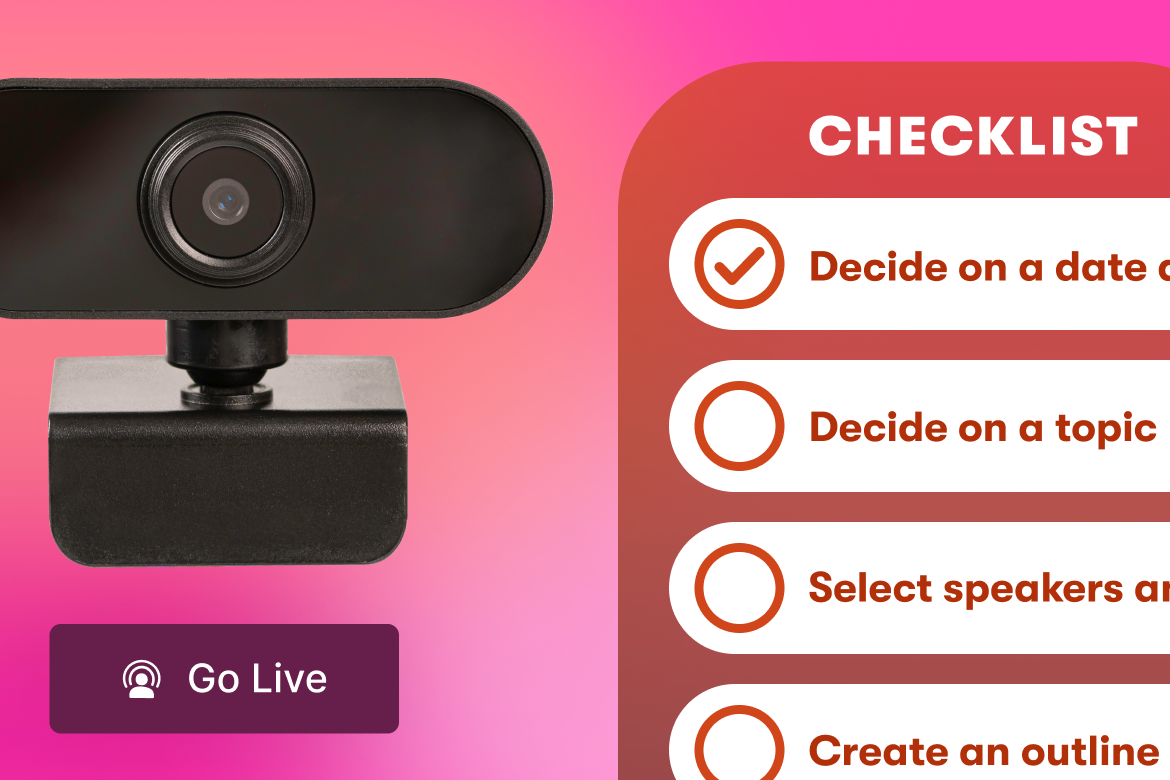Get Animated: 8 Examples of B2B Brands Using Animated Videos for Marketing
January 13, 2022
Topic tags
We get it — when you think animation, you probably think cute cartoon characters in white gloves and bluebirds that moonlight as tailors and seamstresses. Or worse, you picture whatever Pixar’s latest release is and feel like you’ll never compete with that since most of us don’t have multi-million-dollar budgets and huge teams to create animation projects.
But don’t let those preconceived notions stop you! Animation can be fantastic for B2B video, even without a massive budget. From explainer videos to social media clips to serialized content, here are eight brands that are infusing animation into current marketing efforts.
1. Crazy Egg makes it fun to learn about product features
In this fun explainer video, Crazy Egg, a heat map and website analytics tool, uses animated renderings of its product to showcase its product’s features.
In just a couple minutes of animation, we learn about: 1) the heat map tool, which shows us where website visitors are focusing their attention; 2) confetti, which pinpoints where exactly visitors are clicking; and 3) scroll map, which shows us how far visitors are scrolling down a page. Each feature is broken down into a few simple animations that are easy to understand.
But Crazy Egg also made sure to include extra animated flourishes to make the video fun to watch. Tumbleweed rolls across the screen, a little bulb pops on, and best of all, a tiny character with a giant mustachio guides us through the product.
Crazy Egg managed to add touches of whimsy without detracting from the explainer video’s goal of showing how the company’s website analytics features can solve the viewer’s problem.
2. Security@me adds animation to liven up dry content
Security disclosure assistance company Security@me also opted for a fun and colorful animated product explainer video, created by the animation studio Animwood. The video explains how Security@me’s directory can help companies create a responsible disclosure policy and streamline the disclosure process.
Watch the full video by Animwood.
In the video, a “good hacker” finds a security vulnerability and is frustrated to realize there is no process in place to report it. Security@me’s product is pretty technical, so the animated video doesn’t show specific product features and realistic animations of its product in use the way Crazy Egg’s video did.
Instead, the voiceover explains how the product works, while emails fly around in the form of paper airplanes, darting from one animated computer to the next. All the while, the hacker types a line of code gibberish that flashes across the screen.
Using animation like this allows the company to create a step-by-step walkthrough of the problem its product solves (and how it does so) that is great fun to watch. That’s not an easy feat when you’re talking about something as unexciting as streamlining security breach disclosures.
3. Ahrefs keeps it simple (and silent)
SEO tool Ahrefs’ animated explainer video stands out because it doesn’t use voiceover at all. And yet, the motion graphics and illustrations still manage to show the viewer exactly what Ahrefs does and how it works.
Without words, the video tells us a simple story that many viewers will be all too familiar with: A business owner puts time and money into creating a great website, and everyone loves it. But (there’s always a but, right?) when they try searching for the website on Google or other search engines, all of the business owner’s competitors pop up first, and the awesome new website is pushed all the way to the fourth page of results.
Now we know the problem the business owner is trying to solve: ranking higher for search engines. The next part of the video shows us how Ahrefs can help with keyword research, backlinks, and automatic reports of a website’s performance. With Ahrefs, the business owner can get the website back to the top of search results where it deserves to be — and where it can increase sales.
Not using voiceover is a risky choice. If done poorly, you’re left with a confusing video and a viewer that has no idea what your product does. Ahrefs does use strategic text in a few key places to tell the story, but most of the messaging is visual, and the images do the heavy lifting. However, because the story is so easy to follow and so familiar to this audience, Ahrefs doesn’t need a voiceover to make sure the viewer knows exactly what’s going on.
4. Microsoft Explanimators serializes storytelling
Microsoft’s storytelling division Microsoft Story Labs releases long-form(ish) videos and articles from different parts of the company. In its animated video series Explanimators, each episode takes a look at a big innovative tech concept (think: decarbonization, inclusive design, blockchain, etc.) and breaks it down for Microsoft’s audience.
Each episode is made in a different animation style. For example, the episode above, “Decarbonization,” looks like a classic Super Mario arcade game, while the “Quantum Computing” episode looks hand-drawn.
Microsoft’s audience is interested in technology and learning about new technology-related topics, but they aren’t necessarily up to date on every cutting-edge development, either — very few people are unless they work in one of these fields. The topics covered are all fairly current, but still accessible and easy to digest.
5. Wistia knows their — ahem, our! — audience
Have you ever thought about what your video gear gets up to at night when no one’s at the office? We have!
Our new animated series Gear Squad vs Dr. Boring takes a look at the life of your video gear at night after the marketers go home for the day. The animation is reminiscent of the cartoons with animated objects that we all grew up watching (like Aqua Teen Hunger Force or even The Brave Little Toaster, if you’re old school).
The series dials into marketers’ pain points, such as creating interesting outreach campaigns(instead of dull ones, as their nemesis Dr. Boring wants), backing up files, and collaborating well with others. Every episode tries to address these pain points in a way that’s funny and easy to watch.
For example, in the first episode, the Gear Squad faces off against Dr. Boring, who’s trying to sabotage their creative email drip campaign and make it, well, boring.
We know our target audience well, and we use this animated series to provide some comic relief — and solutions — around things they struggle with at work.
6. Slalom Build hypnotizes viewers
Website and technology builder Slalom Build included an animated video on its “How we do it” page to explain BaaS (building as a service), which its business model is based on.
Slalom Build went in the opposite direction than Ahrefs. Rather than letting the animation do all of the talking, they used simple, elegant, light-on-black line animation to add a hypnotizing visual backdrop while the voiceover actually does all the explaining and tells us about their business.
The voiceover educates the viewer on what Slalom Build does, but it’s the beautiful graphics that we can’t drag our eyes away from. These definitely keep us watching until the end. The animation is beautiful, it fits well with their branding, and it lets the voiceover do the heavy lifting without overshadowing it.
7. Slack animates event announcements
Business communication platform Slack posted a short and sweet animation on social media to advertise its two-day virtual networking event, #SlackFrontiers.
The video is super simple: a few emojis, Slack’s brand colors, and a couple of lines of text. This kind of animated video is easy, affordable, and quick to create. It’s especially good for social media because it allows you to mix it up and step away from still images but doesn’t require many resources to execute. This video isn’t trying to reinvent the wheel — but it doesn’t need to in order to be effective.
8. Mailchimp celebrates the holidays
Another great example of an animated social media video is email marketing automation platform Mailchimp’s Halloween post. The succinct, accessible, and very orange cartoon shows a black cat popping out of a pumpkin. The post copy reads, “Boo(p)! #HappyHalloween.”
The video is brief and to the point, and we would argue that it’s exactly the kind of content that followers want to see from brands during holidays. It’s festive and fun, without trying to squeeze in sales-oriented messaging or make it about the company. It’s the kind of post that builds brand affinity and allows viewers to enjoy your content for its own sake. And the video did well, with over 1,500 views and counting.
Basically, the video is seasonal, entertaining, and it looks good. This kind of quick, fun, animated video works really well on social media.
Add animation to your marketing mix
If you want to freshen up your video marketing strategy, adding animated videos is a great way to try something new and surprise your audience without destroying your budget.
Start out with short and sweet social videos to dip your toes in — or, if you’re feeling up to the challenge, dive straight into the deep end and pitch your leadership a full animated video series!






